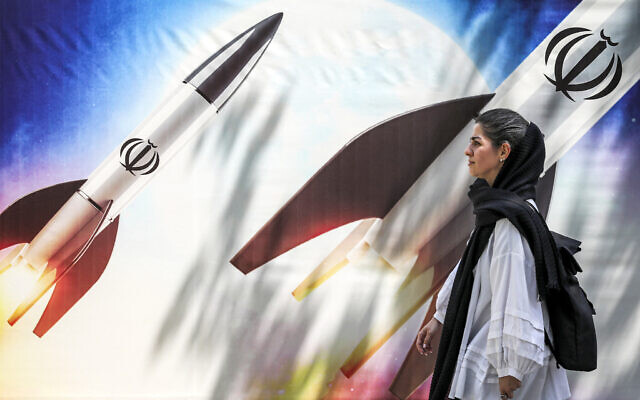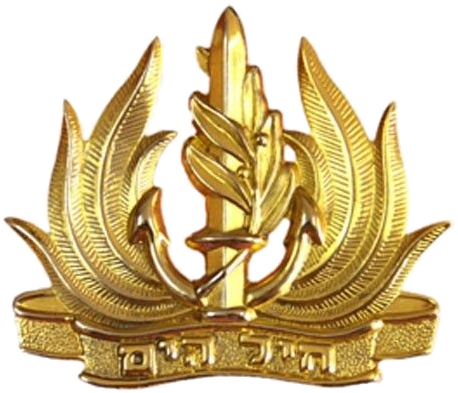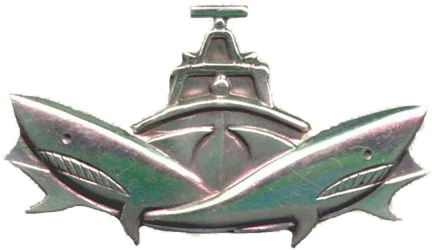Whoa, worse than Obama. This doesn’t sound good.
https://www.tabletmag.com/sections/news/articles/this-isnt-obamas-iran-deal-its-much-much-worse
The last thing the world needs is another nuclear-armed dictatorship flush with cash and attacking its neighbors. But that’s what President Biden and his Iran envoy Robert Malley are creating in the deal they are about to close in Vienna, according to career State Department sources.
Anyone seeking to gauge the imminent outcome of the international talks over Iran’s nuclear program being held in Vienna should take a look at reports from late January that three top U.S. diplomats had quit—largely in protest over the direction set by U.S. Special Envoy for Iran Robert Malley, who serves as the U.S. government’s chief negotiator.
Having served for two years in former Secretary of State Mike Pompeo’s Iran Action Group, I knew that this development was tantamount to a public cry for an intervention. Such resignations—not of conservative dissenters, but of career staff and President Joe Biden’s own political appointees—should have been cause for Biden or Secretary Antony Blinken to recall Malley and investigate. Their failure to do so is a sign either of a troubling lack of attention to the talks, or else the possibility that Malley—who served in the same capacity under President Barack Obama when the first Iran deal, the Joint Comprehensive Plan of Action (JCPOA), was originally negotiated and signed—has been given a free hand to negotiate whatever he wants, as long as he gets Iran to sign.
Evidence for the latter view can be gleaned from the fact that Blinken has reneged on his pledge that his Iran negotiating team would have “a diversity of views.” Instead, he has let Malley continue to concede issue after issue in Vienna. Multiple career officials view these capitulations as so detrimental to U.S. national security that they contacted me requesting that I rapidly share details of these concessions with Congress and the public in an effort to stop them.
Reports out of Vienna indicate that a deal could occur within the next few days. While some issues are still being ironed out—such as whether the United States will grant Russia immunity from any economic sanctions relating to Iran, as Russian Foreign Minister Sergei Lavrov has publicly demanded—the details that follow have been conveyed to me as finalized. My subsequent discussions with foreign diplomats—including those directly involved and those outside but close to the negotiations—confirmed their claims. Ambassador Mikhail Ulyanov, who led negotiations on behalf of Russia, has crowed that “Iran got much more than it could expect. Much more,” and bragged about how Russia teamed up with China and Iran to get dozens of wins over the United States and European negotiating positions.
The list of concessions that follows is long, detailed, disturbing, but also somewhat technical. But this much is clear to me: The deal being negotiated in Vienna is dangerous to U.S. national security, to the stability of the Middle East, and to the Iranian people who suffer most under that brutal regime. The lack of evidence to justify a removal of U.S. sanctions is illegal, and the deal that will be foisted upon the world without the support of Congress will be illegitimate. This deal will not serve U.S. interests in either the short or long term.
With Robert Malley in the lead, the United States has promised to lift sanctions on some of the regime’s worst terrorists and torturers, on leading officials who have developed Iran’s WMD infrastructure, and has agreed to lift sanctions on the Islamic Revolutionary Guard Corps (IRGC) itself. In exchange, Iran will receive fewer limitations than those imposed under the JCPOA, and the restrictions on its nuclear program will expire six years sooner than under the terms of the old deal. And that’s just the beginning.
The Biden administration is preparing to end sanctions under Executive Order (E.O.) 13876, known as the Supreme Leader’s Office E.O., as soon as the deal is finalized. This would lift sanctions on nearly all of the 112 people and entities sanctioned under that authority, even if they were sanctioned under other legal authorities as well. This move is significant because the United States has used this authority to sanction some of the most evil people you can possibly imagine. Malley and his Russian go-betweens in Vienna have agreed that these people should now be free to roam around the world despite their murderous pasts, unshackled from any restraints on their financing, and plotting new terror attacks.
If that sounds like an exaggeration, believe me: It isn’t. Let’s start with the terrorists, like Mohsen Rezaei, who was involved in the AMIA bombing in Argentina in 1994 that killed 85 people when he was commander-in-chief of the IRGC. Argentine authorities issued international warrants for his arrest, and he remains on Interpol’s Red Notice. Equally culpable in the AMIA bombing is Ali Akbar Velayati, who today serves as a senior adviser to Supreme Leader Ali Khamenei. He was charged as being one of the “ideological masterminds” behind the attack. He also committed acts of terror in Syria, where he helped the Iranian regime extend credit lines to the brutal Assad regime. Under the nuclear impending deal, both Rezaei and Velayati would be removed from U.S. sanctions lists.
The victims of the Iranian regime span every single continent, but the terror suspects being desanctioned by the United States in particular have American blood on their hands—particularly IRGC Brigadier General Hossein Dehghan, who led IRGC forces in Lebanon and Syria when Hezbollah bombed the Marines compound in Beirut that killed 241 U.S. service members, 58 French soldiers, and left hundreds more wounded.
Then there are the men like Ebrahim Raisi, who now reports to Supreme Leader Khamenei with the misleading title of president. Raisi participated in and ordered the execution of around 5,000 Iranians in the 1988 “Death Commissions” as a judge overseeing sham trials—including of young children—that typically lasted only a few minutes before guilty verdicts and death sentences were delivered. Raisi’s victims were loaded by forklifts in groups of six onto cranes and hanged every 30 minutes.
One of the few survivors “spared” was a woman who was taken to a torture chamber instead of to the crane on account of her pregnancy. She was repeatedly lashed and tortured by several men, and later said she remembered each of their faces, which were etched in her mind. She could not forget that of one young and callous man in particular: Ebrahim Raisi. Under the new nuclear deal, U.S. sanctions imposed against Raisi will be lifted.
The deal also lifts sanctions (which I was personally involved in imposing) against Ahmad Jannati, one of the regime’s most powerful and brutal clerics. Jannati is primarily responsible for rigging the country’s elections as chairman of the Guardian Council and Assembly of Experts. But in his spare time, he leads massive rallies in “Death to America/England/Israel” chants. Jannati routinely pushes for the regime to kill protesters. “I thank the judiciary chief for executing two protesters,” he said in 2010 in the aftermath of the Green Movement, “and urge him to execute others if they do not give up such protests.” That fervor has not changed since the early days of the regime. When Jannati was told a prison in Khuzestan province was filling up with dissidents, he volunteered to go serve there as a “judge.” He proudly recounted: “I got busy working … for there was some doubt whether we should execute them all or not.”
Then there is their master, Khamenei himself, who is ultimately responsible for every act of terror and murder committed by the Islamic Republic of Iran. We know that Khamenei has personally ordered the massacre of Iranians by his security forces. In November 2019, as brave Iranians took to the streets to protest the 40 years of corruption and oppression at the hands of the clerics, Khamenei assembled his top security team together and told them: “The Islamic Republic is in danger. Do whatever it takes to end it. You have my order.” In the ensuing days, about 1,500 Iranians were killed by the regime’s brute squads, including dozens of children and hundreds of women. This mass murderer will also be free of sanctions.
One of the most challenging responsibilities I had in the State Department was directing the human rights portfolio. For two years, I was in charge of documenting massacres like the one that Khamenei ordered, combing through biographies and photos of torture victims, including children, with bullet holes in their heads. I hope to never see such things again, but I fear that because of this deal, we all will.
Sometimes, in the day or two after the United States placed sanctions on such men, I would get a phone call or email from an Iranian who lost a loved one because of them. Many said it was the first time in years that they felt they had received a modicum of justice—that their pain had been heard in Washington—and they profusely thanked the United States. Sanctions are not merely economic, political, or diplomatic tools—they speak truth to evil.
If you hadn’t heard of such crimes before, it’s mostly thanks to a man named Javad Zarif, who served as the regime’s chief propagandist from 2013-2021. He had the misleading title of foreign minister, but that wasn’t his role in the regime. Zarif had little power to negotiate deals or set the foreign policy of the regime—that’s the IRGC’s job—so he was tasked with fluffing reporters and think tankers in Europe and the United States in the hopes of deceiving them about the regime’s true nature and radical intentions.
He also readily defended the regime’s executions of gay people. In 2019, Zarif was asked by a brave German reporter, “Why are homosexuals executed in Iran because of their sexual orientation?” “Our society has moral principles,” Zarif responded, “and we live according to these principles. These are moral principles concerning the behavior of people in general. And that means that the law is respected and the law is obeyed.” In plain language, Zarif was covering up for the fact that his regime has executed thousands of gay Iranians—between 4,000 and 6,000 according to some estimates. Zarif’s involvement in the regime’s international terror apparatus earned him U.S. sanctions in 2019. Those will be gone, too.
But the pending nuclear deal doesn’t just lift sanctions on people who come and go from power. This deal lifts sanctions on the various economic entities that fuel the regime’s machinery of repression. Most notably, it would lift sanctions on Khamenei’s personal slush funds known as “bonyads,” including Astan Quds Razavi and the Execution of Imam Khomeini’s Order, which confiscated houses and billions of dollars from political dissidents and religious minorities to enrich Khamenei and his goons. Also free from restrictions will be the Bonyad Mostazafan, a massive conglomerate that systematically confiscated property from Jews and Bahai’s after 1979. Bonyad Mostazafan is enmeshed with the IRGC and served as a corruption network used to enrich top Iranian terrorists. All these groups and men have been sanctioned under E.O. 13876, the Supreme Leader’s Office sanctions authority, which the White House is preparing to end.
It’s important to note here that the Supreme Leader’s Office EO is in no way related to Iran’s nuclear program, and the removal of these sanctions under a so-called “nuclear deal” is a farce. The Trump administration lawyers who drafted this executive order were quite clear when we released it in 2019: It was a response to actions taken by Iran and its proxies to destabilize the Middle East, promote international terrorism, and advance Iran’s ballistic missile program. It was issued in response to Iran’s attack against U.S. military assets and civilian vessels.
The EO’s impending repeal makes clear that what Biden and Malley have in mind is not merely, or even mainly, a “nuclear deal” with Iran—it is an appeasement agreement that unshackles the Islamic Republic from any significant economic restrictions, regardless of whether it will enrich the regime’s apparatuses of terror.
Sanctions will be lifted on huge swaths of the regime’s economic and financial arms—close to 40 major entities—that support Iran’s terror, repression, and WMD infrastructure. These sanctions have not been “inconsistent with the JCPOA,” which is the justification that Blinken and Malley have claimed as justification for their repeal. The administration is lifting sanctions on economic arms of the Mehr Eqtesad network and Bonyad Taavon Basij, for example, which directly funds the Basij Resistance Force that recruits and trains child soldiers forced into combat.
The U.S. is not lifting sanctions on the Basij itself (which was the security entity responsible for killing most of the 1,500 Iranians in November 2019) because Iranian negotiators didn’t particularly care—they just wanted sanctions on the funding mechanisms lifted because that’s what actually matters. And Malley obliged. While serving as the mailed fist of the regime’s repression and brutalization of its own people, the Basij play no role whatsoever in Iran’s nuclear program.
Sanctions will also be lifted on the Central Bank of Iran (CBI) and the National Development Fund (NDF), which were sanctioned under counterterrorism authorities for providing billions of dollars to the IRGC, the Quds Force, and Hezbollah. The CBI and NDF were sanctioned after Iran brazenly attacked energy infrastructure in eastern Saudi Arabia in September 2019, an act of war. These organizations still fund terrorism.
The deal will also lift sanctions on the National Iranian Oil Company (NIOC) and the National Iranian Tanker Company (NITC) that fund the Quds Force, which under Qassem Soleimani’s leadership was directly responsible for killing hundreds of thousands of Syrians and Iraqis and for the death of at least 603 Americans in Iraq from 2003-2011.
The Central Bank, NDF, NIOC, and NITC were all sanctioned under counterterrorism authorities approved by career interagency lawyers, including from the Department of Justice and Department of the Treasury. These sanctions came from a rigorous interagency process that ensured we would not impose them haphazardly; but once such a determination is made, they are not supposed to be lifted until it can be proven the sanctioned entities longer support terrorism. To be clear: They are. But Malley apparently found a way to badger and bully the career lawyers into submission so that these terror financiers will now be free from sanctions, too.
Perhaps most troubling is Malley’s persistent attempt to remove sanctions on the IRGC, which has plotted and carried out terrorist attacks in 35 countries around the world. As Pompeo disclosed last year, the IRGC is currently providing safe haven and logistical support for al-Qaida inside Iran. When Malley initially made an interagency request to remove the IRGC from the State Department’s Foreign Terrorist Organization list, he met severe resistance from startled career officials across government. Nevertheless, he persisted.
Instead of demanding that the Iranians cease conducting and supporting terrorism, Malley obliged repeated Iranian entreaties to remove the IRGC’s terror designation. At first, he proposed that it could be exchanged for an Iranian commitment to future talks on the terrorism and “regional issues” files. The Iranian negotiators and their Russian facilitators couldn’t believe their luck, and asked for more. They demanded that the concession must be unconditional, and that no future talks would be acceptable. Of course, a promise of future talks is all but meaningless given the American capitulation in Vienna. Either way, a foreign diplomat recently confirmed to me that the IRGC Foreign Terrorist Organization delisting has indeed been finalized.
So what have we received in exchange for all these concessions to the most vile men and institutions in Iran? Has the regime come clean about its clandestine nuclear activities or committed to stop nuclear enrichment? Has the regime committed to stop supporting terror and taking American hostages? The short answer on all counts is no.
The JCPOA’s sunset clauses have not been extended at all. Some JCPOA restrictions, like the United Nations arms embargo on Iran for importing or exporting conventional weapons, have already expired. All meaningful restrictions will expire over the next nine years. Iran will not make any concessions on its ballistic missile activity, its terrorist activity, its support for proxy groups, or its hostage-taking from the United States and other countries. But it will get money anyways—lots of it.
Iran is set to get access to a massive windfall of cash: My latest estimate (derived from figures declassified during my tenure at the State Department) is $90 billion in access to foreign exchange reserves, and then a further $50-$55 billion in extra revenue each year from higher oil and petrochemical exports, with no restrictions on how or where the money can be spent.
Personally, the most troubling transfer of funds will be the $7 billion ransom payment the United States is preparing to pay for the release of four Americans from an Iranian jail. Now, let me be clear: I would be extremely glad to bring these Americans back home safely as quickly as possible. They are innocent victims who, along with their families, have suffered unjustly for far too long. But make no mistake: Biden’s payment will only supercharge Iran’s hostage-taking industry.
After Obama paid Iran $1.7 billion for four Americans back in 2016 (including $400 million in literal pallets of cash), Iranian clerics and generals bragged about it for years—and some suggested that taking hostages could henceforth serve as a sound method for balancing Iran’s budget. Sadly, if Biden goes through with this deal, that could well be the case again. Seven billion dollars would amount to around one-third of Iran’s annual terror and security budget, fueling even more violence around the world and against Iranians. At prices like these, more Americans are sure to land in Evin Prison.
Each day, I learn more about the terrible deal coming out of Vienna. The degree of capitulation happening there is staggering, especially for those of us who worked in the technical trenches to impose these sanctions and monitor Iran’s nuclear program for years. That’s why nonpartisan career staffers are desperately asking for more oversight from Congress, even though Malley and the administration designed the negotiation process to take place without any congressional (and thus democratic representative) input. Administration officials have tried to make the case to lawyers internally that they are merely going back to the original JCPOA, and therefore do not need to submit the deal to Congress under the 2015 Iran Nuclear Agreement Review Act (INARA) signed into law by the president.
That is not true. The Biden administration is not going back to the JCPOA. It has negotiated an entirely different agreement. And I can assure you it is much, much worse than the original.











Recent Comments